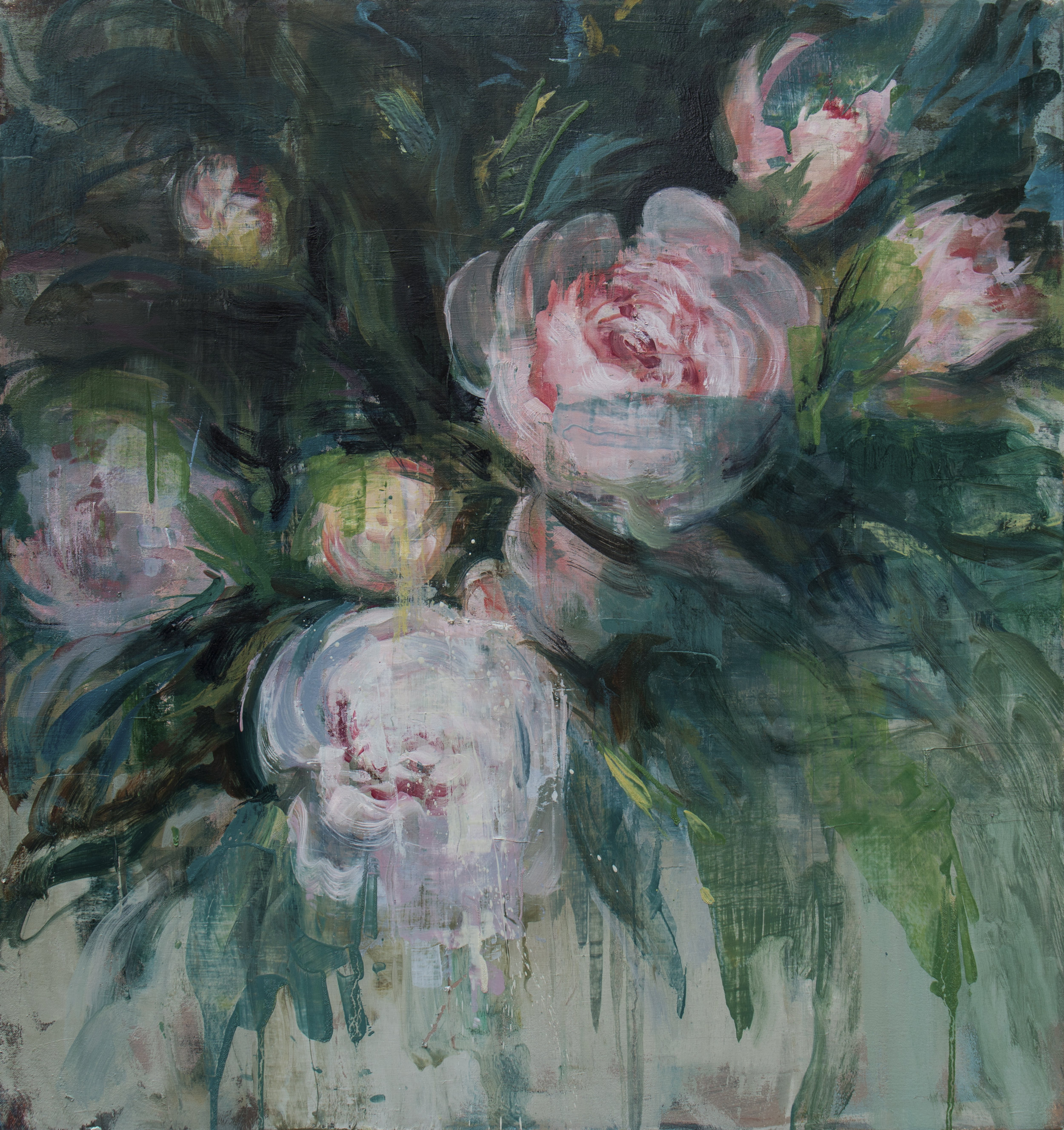“The final test of a painting, theirs, mine, any other, is: does the painter’s emotions come across?
”
If emotion is the primary aim of painting, then Joseph Adolphe tackles the heavy-hitters. Stunning as they are, Adolphe’s dramatic compositions, gestural brushstrokes, and saturated palette tout more than mere visual appeal. The upcoming October exhibition of his new works at M Fine Arts Galerie promises both optical pleasure and emotive punch. His paintings transcend art’s decorative function, serving instead as precious records of universal human struggle, welts left behind by the blows of inner turmoil. The technical and stylistic confidence of Adolphe’s creations belies the existential uncertainty that informs their conception. The simmering fluids of anxiety, frustration, and doubt come to a boil on the surface of Adolphe’s canvases. The intensity of the work’s physical execution is palpable. Just as Adolphe’s finished canvases viscerally acknowledges the act of painting, the content of his work emphasizes process over product, exploring the underlying forces of the material world.
As much as Adolphe’s canvases command attention, they also merit time. The viewer of Toro Bravo no. 38—or any of Adolphe’s bull series, for that matter—is greeted first by bravado, forcefully confronted by the bull’s impressive scale, threatening stance, and fervid execution. After several moments of marination, however, the work’s macho impact begins to unravel and evolve, softening and giving way to a more complex portrait of personal power. The slashes of paint comprising the bull’s immense dark form crash and bleed into another, gorily melding the beast with his hazy blue surroundings. A pair of eyes—large and unexpectedly doleful—prompt the viewer to contemplate the bull’s uncertain fate at the hands of a brutal toreador.
In both subject matter and technique, the artist strikes a precarious balance between solidity and fragility. Sugary pink blooms peek out from a shroud of dense greenery in Peonies no. 2, while plump golden fruits dangle enticingly from the lush branches of The Orange Tree. Dripping with pigment and juicily executed, Adolphe’s fruit and flowers alike appear moments away from melting off the surface of their canvases. In a nod to 17th-century Dutch memento mori still life traditions, Adolphe reminds us of the bittersweet brevity of nature’s treasures. A yellowed skull swathed in crumpled white paper rests on the shelf below a ripe orange bouquet in Still Life no. 9, enhancing the impact of Adolphe’s subtle references to life’s essential transience.
Adolphe’s work covers a refreshingly wide swath of subject matter. The marked fluidity with which the artist transits between diverse content and genres speaks to the potent universality of his deeper interests. Themes of rebirth and resilience serve as connective tissue, easefully stringing together subjects as seemingly disparate as bulls, flowers, and dishes.
The technical strength and emotional authenticity of Adolphe’s work has not gone unnoticed. Since 1998, his paintings have been featured in over forty exhibitions internationally and are held in numerous private and corporate collections. Adolphe has been the recipient of several awards, including the first place prize in the 2010 “Figure Now” competition at Fontbonne University in St. Louis, Missouri. In the summer of 2012, his painting Mars No. 1 was chosen for the cover of Manifest Gallery’s exhibition-in-print, International Painting Annual.
Originally from Calgary, Canada, Joseph Adolphe moved to New York City in 1992 to attend the School of Visual Arts, where he received his MFA in 1994. Adolphe now lives with his wife and children in New Haven, Connecticut and is a professor of Fine Arts at St. John’s University in New York. To learn more about the artist and his work, visit his website or check out the trailer for HEAVYWEIGHTPAINT, a 2016 documentary following Adolphe and three other painters working in Brooklyn, New York.
Text by Cara Wolahan





